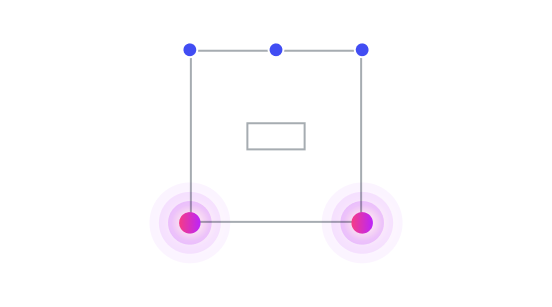
Surround channels can enhance the sense of depth and space over conventional stereo, adding a new sonic dimension and fully immersing the player in the experience of the game. A game player is already immersed in a fully enveloping world, and has the ability to directly interact with and often control the environment. As a result, a game player expects the audio associated with this environment to pan appropriately and dynamically. Passive media, such as film, often makes only subtle use of the surround speakers, as the viewer has no control over the soundfield. As a result, games tend to make much more overt use of the surround speakers, and often use them to directly drive gameplay.
The most obvious use of surround audio is offering audio cues to drive the player toward or away from anything that is out of the limited field of view offered by a television screen. These cues can warn the player of enemy fire from a particular direction, lead her toward the location of a hidden item, or help her find a friendly non-player character by the sound of his voice.
The use of audio clues is one of the most important aspects of surround audio for games. If implemented correctly, the surround soundfield can enhance a game tremendously. The surround soundfield can also be used to enhance the feeling of player immersion, reduce player fatigue, increase playing time, and enhance overall enjoyment of the experience. The ambience of an environment can be accurately conveyed from proper use of the front and surround speakers, and can drastically change the listener’s experience. A properly rendered surround ambience can be the difference between peering through a window and actually jumping inside the world of the game.
The most effective way to create a surround ambience is to create an interactive environment engine that makes use of both the front and surround speakers. If a stereo interactive environment engine has already been implemented, incorporating multichannel panning is quite easy.
Prerendered looping or streaming ambiences are often used when an interactive environment engine is not practical. If streaming or looping multichannel audio is not feasible for this purpose, multichannel reverberation may be able to create the feeling of immersion.
Many games also send stereo ambiences to the front speakers, and then attenuate by half and route the same audio to the surround speakers. This technique can be effective in some situations, but does not convey a sense of immersion as well as true surround ambiences.
Background music can often benefit as well from a creative use of the surrounds, whether with background singers, instruments, or effects. But as with any new tool or effect, it can be overdone and become tiresome if used to excess. When using surround audio, it is critical to maintain proper balance between ambiences, music, player character audio, and dynamically panned effects, and to leave enough headroom for the audio that drives gameplay. This is even more important in a surround soundfield, where perception of directionality is critical. If the level of nonessential audio, such as background music, is too high, it will be difficult for the player to perceive the directionality of essential audio.
